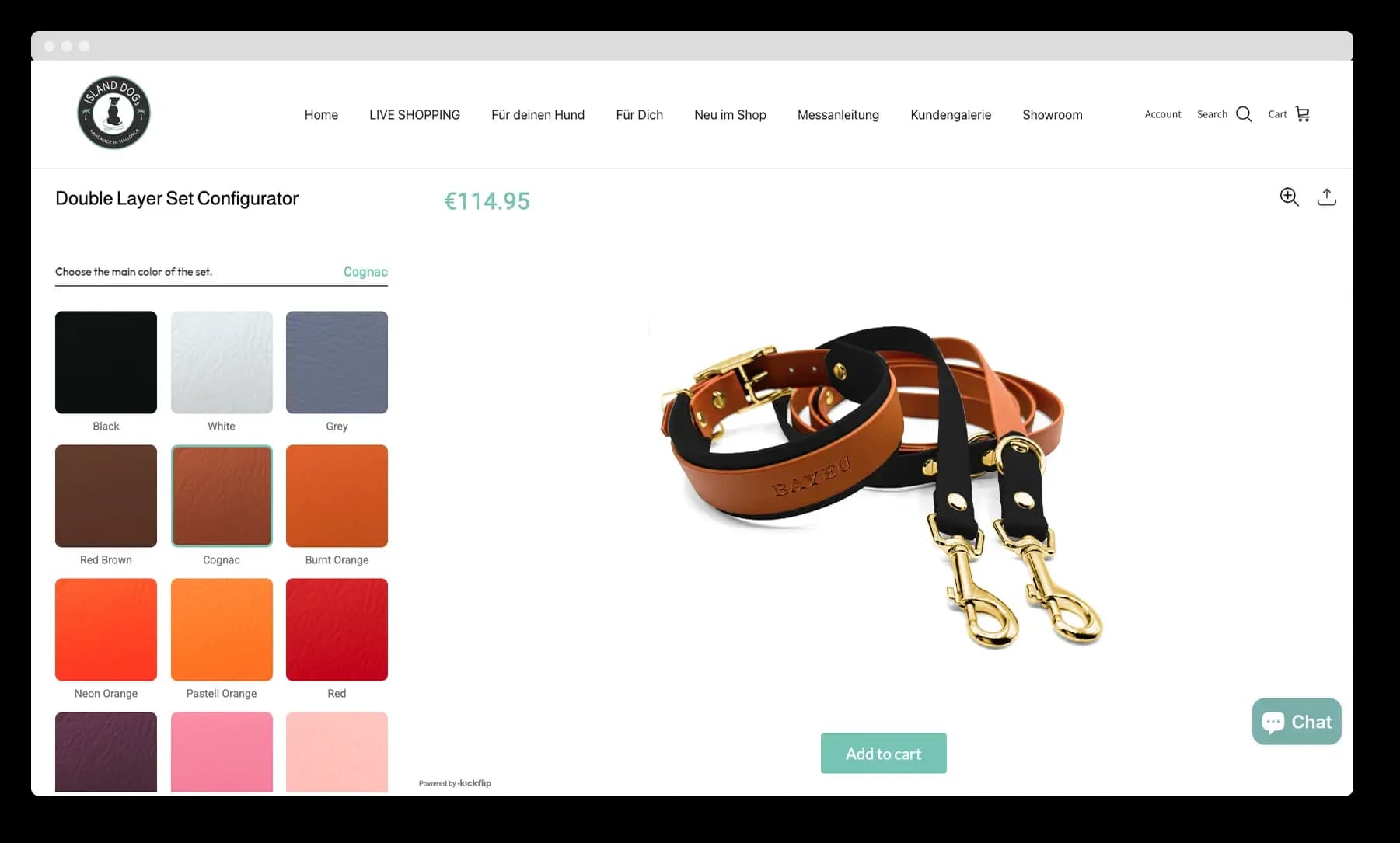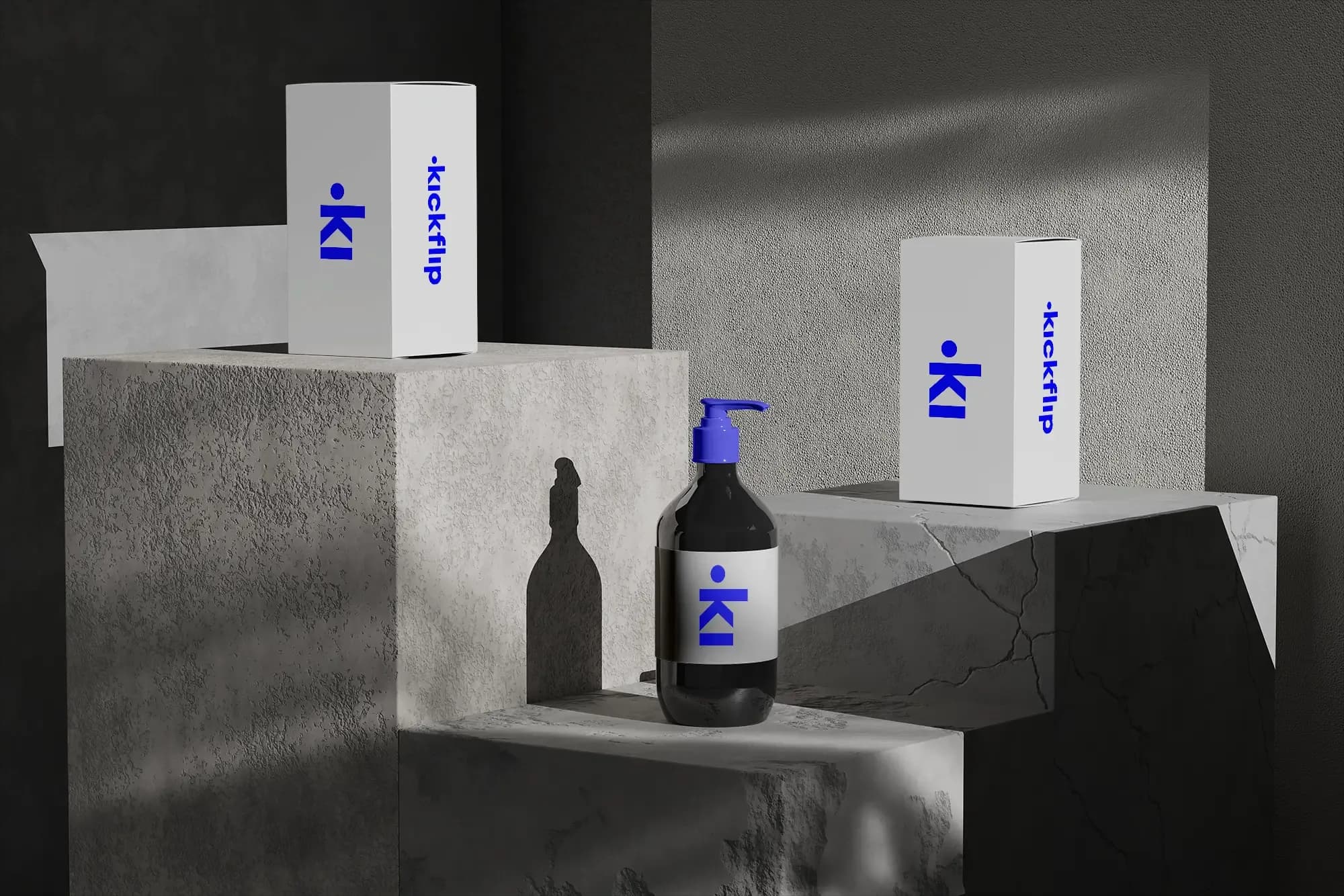1. Undone – Basecamp watch builder
Industry: Jewelry / Watches
Use Case: Customizable watches

Undone, fueled by coffee and instant ramen, is a watch customization company that puts individuality at the center of its craft. Their Kickflip-powered configurator allows customers to design timeless and individual pieces by choosing dials, cases, dial prints, bezels, and more, creating a unique watch for their customers.
Key Features:
Modular customization for buckles, straps, and more
Live product preview with color and layout changes
Premium materials for durability
With an experimental approach to watches customization, undone has mastered the fundamentals of creating watches to allow their customer to create something as unique as they are.
Have you ever bought a watch that was exactly how you wanted? That's actually harder to find than you think.
2. ZORA Designers – Bespoke robe customizer
Industry: Fashion / Luxury Loungewear
Use Case: Custom robe designer for timeless silhouettes

ZORA Designers celebrates elegance and self-expression through slow fashion. Their silhouette robe builder lets customers personalize luxurious robes by selecting styles, fabrics, and thoughtful details—creating pieces that feel both nostalgic and bespoke.
Key Features:
Style and silhouette selection inspired by bygone eras
Fabric and color customization for a tailored aesthetic
Size and personalization options to ensure a perfect fit
Rather than offering fast fashion, ZORA invites shoppers into a more intentional buying process. Each robe is made-to-order, meaning the online shopping experience becomes part of the product’s story.
In a digital world, where clothing is often reduced to a few thumbnails, ZORA stands out by turning product pages into a ritual of self-expression and discovery.
3. Island Dogs Mallorca – Custom dog gear
Industry: Pet Accessories / Lifestyle
Use Case: Custom dog harness and leash sets

Island Dogs Mallorca brings joy (and style) to the canine community with their vibrant harness and leash configurator. This is a great example of Kickflip powering playful UX.
Key features:
Color and pattern mixing for outer and inner layers
Multiple product views to showcase design details
Clear navigation for non-technical users
For pet parents who treat their dogs like family, interactive shopping experiences like this build loyalty. The configurator captures the brand’s upbeat personality while solving real shopper pain points: uncertainty, sizing concerns, and preview limitations.
In such cases, great UX makes customization feel less like work—and more like fun.
4. Brass Hardware – Bespoke home details
Industry: Home Goods / Interior Design
Use Case: Custom brass handles and hardware

Brass Hardware brings craftsmanship into the digital age. Their Kickflip configurator allows homeowners and designers to visualize how intricate brass pieces will look on drawers, doors, and cabinetry.
Key features:
Finish and shape selection with crisp product visuals
Pricing logic based on configuration and quantity
B2B and DTC modes within the same interface
This is product visualization software at its best—elevating something as tactile as a handle into a compelling online shopping experience.
For ecommerce companies in home décor, this is a signal: it’s time to turn product pages into immersive experiences.
5. Carry Proof – Personalized minimalist wallets
Industry: Accessory / Handcraft
Use Case: Ensure a functional user experience

Carry Proof set out to solve the everyday frustrations of traditional wallets by designing minimalist, durable products that combine utility, comfort, and premium materials like genuine leather and aerospace-grade metals.
Key Features:
Photo upload and real-time preview of the final build
Realistic engraving for optimum customization
Easy set up guided by UI
It’s the kind of product that invites sharing, especially on social gathering—and helps shoppers imagine the final product in their hands (or in their pockets).
This is more than a wallet—it’s an extension of yourself that drives word-of-mouth, repeat sales, and UGC content.
Why product visualization matters more than ever
The online shopping experience has evolved. It’s no longer just about browsing—it’s about engaging. Today’s consumers expect rich, interactive shopping experiences that reflect the same sense of confidence and excitement they’d get in a physical store. They don’t just want to see products; they want to understand them.
Before diving into tools like AI or AR, the smartest ecommerce companies focus on what they can fully control: the product configurator experience. Kickflip enables brands to transform static product pages into immersive visual journeys—where users explore, customize, and make confident decisions.
Here’s why that matters:
shoppers expect to explore intricate details without needing a physical sample
explainer videos, realistic product images, and hands-on customization offer more value than static photography
when users interact with customization options, they stay longer and convert more often
Product visualization is not about chasing future tech. It’s about offering a clear, trustworthy path to the final product. Instead of investing heavily in photo shoots or building custom tools, brands can use Kickflip to deliver high-quality experiences grounded in real data and modular design.
for online sellers, this is one of the most effective ways to bring the product to life—visually, interactively, and emotionally.
Final thoughts: product visualization is the new conversion driver
Product visualization is no longer a side feature—it’s a foundational growth lever. Brands that embrace it are seeing real improvements in customer experience, cart size, retention, and marketing campaigns. Because the best ecommerce experiences aren’t flashy—they’re clear, confident, and intuitive.
There’s a lot of hype about AR and AI. But before chasing those trends, the best thing a brand can do is own its product visualization. That means showing the right product images, enabling interactive customization, and giving users full control over the final result. It means reducing uncertainty, making the experience feel tangible—even through a screen and ease purchase decisions.
With Kickflip, ecommerce teams can deliver that level of clarity with their online store. They don’t need to wait for new technologies—they’re already creating real life accuracy and emotional connection through customization.
if you’re preparing a new product launch, revamping your product pages, or planning out your next campaign, this is your foundation. start with visualization—because when you get that right, everything else becomes easier to scale.
In today’s ecommerce landscape, the brands that visualize with purpose—and precision—win.

